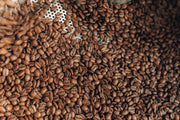Where Does Kona Coffee Come From?

Kona coffee is renowned for its rich flavor and unique growing conditions. In this post, we will explore the origins of Kona coffee, the factors that contribute to its distinctive taste, and the best practices for growing and harvesting it. Whether you’re a coffee enthusiast or just curious about this special brew, here’s everything you need to know.
The Origins of Kona Coffee
Kona coffee originates from the lush volcanic slopes of the Big Island of Hawaii. It was first introduced to Hawaii in the early 19th century by a minister named Samuel Ruggles, who brought the coffee seeds from Brazil. This marked the beginning of what would become a flourishing coffee industry unique to the region.
What makes Kona coffee truly special is its adaptability to the specific climatic conditions found in the Kona district. The combination of rich soil, perfect elevation, and favorable weather creates an ideal environment for coffee cultivation. Farmers have since honed their techniques, ensuring that the quality of Kona coffee remains exceptional.
Today, Kona coffee is not only a symbol of Hawaiian agriculture but also a beloved product across the globe. Its origin ties deeply to the culture and history of the island, making each cup a journey through time and tradition.
The Unique Environment of the Kona District
The Kona district is characterized by its unique microclimate, which plays a pivotal role in producing high-quality coffee. The region benefits from abundant rainfall, warm temperatures, and the distinctive volcanic soil that enriches the land. This combination is unlike any other coffee-growing area in the world.
Kona coffee farmers carefully select locations on the mountain slopes to plant their coffee trees. These higher elevations protect the beans from extreme heat while allowing for temperature differences that enhance their flavor profile. It’s not just about where the coffee is grown; it’s about crafting the perfect conditions for every bean.
The biodiversity of the region also contributes to the coffee’s unique taste. The surrounding flora and fauna interact, creating a harmonious ecosystem that enriches the coffee beans. As a result, Kona coffee boasts a flavor that reflects its picturesque and vibrant environment.
How Soil and Climate Influence Flavor
The soil in Kona is truly exceptional, filled with nutrients and minerals essential for coffee growth. The volcanic ash from ancient eruptions provides the perfect foundation, promoting healthy root systems and rich flavors in the coffee cherries.
Moreover, the climate in Kona is ideal for slow maturation of coffee cherries. The gradual ripening process allows for a higher sugar content, giving Kona coffee its trademark sweetness and smooth finish. Each sip tells the story of its environment, showcasing the effects of soil and climate on its development.
Continuous attention to environmental factors ensures that each harvest captures the essence of its origins. Farmers who embrace sustainable practices contribute to the overall quality and flavor of the Kona coffee that reaches coffee lovers worldwide.
The Cultivation and Harvesting Process
Cultivating Kona coffee is an art form that requires patience and dedication. Farmers typically begin their journey with seedlings, carefully nurturing them until they are strong enough to be planted. The growth process involves constant monitoring of moisture levels, pest control, and soil health to ensure robust plants.
Harvesting is another significant aspect of Kona coffee production. Unlike many commercial coffee farms that utilize machines, Kona coffee is hand-picked. This careful selection ensures that only the ripest cherries are harvested, showcasing the farmer’s commitment to quality.
Once harvested, the beans go through a meticulous processing method that includes washing, fermenting, and drying. Each step is crucial in developing the final flavor profile of the Kona coffee. This artisanal approach distinguishes it not only as a superior product but also as a labor of love.
As a result of this careful cultivation and handling, Kona coffee is celebrated for its smooth texture and rich, complex flavors. It’s more than just coffee; it embodies the passion and heritage of the regions and people involved in its creation.
Understanding the Essence of Kona Coffee
Kona coffee is more than just a beverage; it’s a product of a unique region and a specific cultivation process that contributes to its exceptional quality. Understanding where it comes from enhances our appreciation for every cup and connects us to the rich agricultural heritage of Hawaii.






